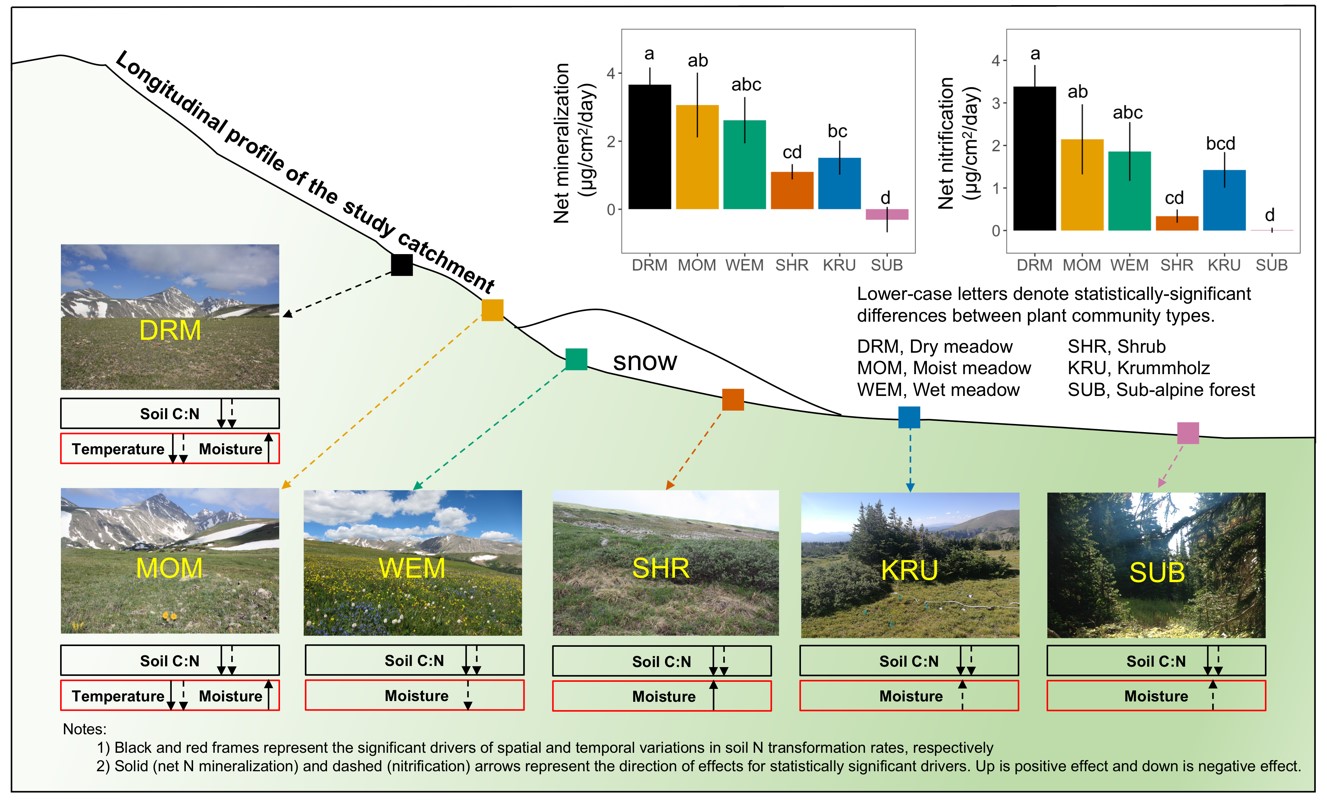Name:Youchao Chen
Tell:
Email:chenyouchao@wbgcas.cn
Organization:Wuhan Botanical Garden
How Plant Communities Affect Soil N Transformations in Alpine Ecosystem at Patch Scale?
2020-03-11
The relationships among climate forcing, soil properties, and the fate of nitrogen (N) are particularly important in alpine ecosystems vulnerable to climate warming. While many previous studies provide coarse resolution, or a catchment-scale picture of the fate of N in alpine ecosystems, physical properties actually vary over shorter length. This includes variation in soil temperature and water availability, first-order controls on microbially-mediated soil N processes. Similarly, plant species distributions, also governed by physical properties, are highly heterogeneous. Determining the relationships among variation in physical properties, plant community composition, and soil N cycling is an important next step toward developing a predictive understanding of how hydrologic connectivity and the N budgets of alpine ecosystems will change.
In order to understand alpine response to climate change from plant communities at patch scale, Dr. CHEN Youchao from Systems Ecology Group at Wuhan Botanical Garden, collaborated with Dr. Eve-Lyn S. Hinckley from University of Colorado at Boulder, evaluated differences in net N mineralization and nitrification rates using in-field incubation experiments across patches defined by six plant community types within an alpine catchment of the Colorado Rocky Mountains.
This study demonstrated that across six plant communities in an alpine tundra-forest ecotone, rates of net N mineralization and nitrification not only differed, driven by soil moisture, temperature, and C:N ratios, but also experienced different trajectories through time.
During the brief alpine growing season, the relatively drier, warmer meadow communities (dry and moist meadow communities) had the highest net N transformation rates at the beginning of the season, which declined with decreases in soil moisture. In contrast, treeline communities, krummholz and subalpine forest, exhibited net immobilization of inorganic N, with a low probability of significant gaseous losses or transport to the stream. Finally, the wet meadow and shrub communities had cooler, wetter conditions that may have inhibited aerobic microbial processes, especially early in the growing season.
This work suggests that as the alpine growing season lengthens in a drier, warmer future, changes in soil moisture will likely be primary factors driving patterns of net N transformation rates.
This work was supported by the National Natural Science Foundation of China, and has been published in CATENA with the title of “The role of physical properties in controlling soil nitrogen cycling across a tundra-forest ecotone of the Colorado Rocky Mountains, U.S.A”.

Soil N transformations and their determining factors across plant communities within an alpine catchment of the Colorado Rocky Mountains (Image by CHEN Youchao)